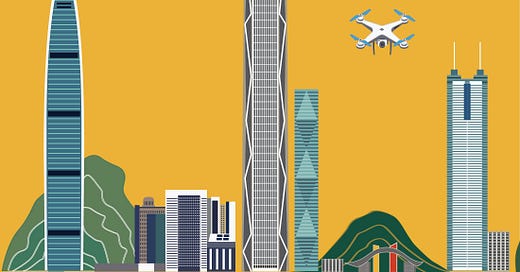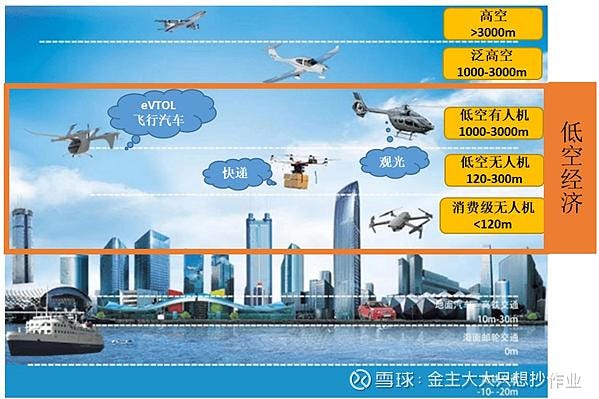CITY REPORT: Shenzhen and the "low altitude economy"
Shenzhen is at the forefront of the "low-altitude" economy which encompasses drones, low-altitude personal flying vehicles, and other small flying machines.
It’s lunchtime at the Xinghe COCO Park shopping mall in the Longhua District 龙华区 of Shenzhen. I’m meeting with a technologist who has also been working as a planner for Shenzhen’s “low altitude economy” or dikong jingji 低空经济. He runs a small consulting firm with an office in a building above the mall where he shows me a plan for the low-altitude economy he’s working on for the district. A map outlines the flight routes 航线, operated by delivery companies like Meituan 美团 and Shunfeng 顺丰.
In 2024, the NDRC (National Development and Reform Commission) of China established a unit focused on the low-altitude economy responsible for formulating mid- and long-term development plans and policies related to the low altitude economy. This refers to drones, drone delivery, and unmanned aerial vehicles under development such as electric vertical take-off and landing (eVTOL), operating under 1000 m altitude.
He takes me out to a food delivery stand operated by food delivery company Meituan, located in an outdoor plaza of the mall. Although it’s lunchtime, there are no drones operating. Puzzled, we find a sign on the stand saying “drone delivery currently paused citywide. A bit disappointed, my host tells me, “lunch hour is usually the peak.” As we walk back to his nearby office, we pass office workers grabbing their lunches from delivery boxes located nearby—presumably delivered the “old fashion way” by delivery courier on e bike.
I speculate (without reply) if Xi Jinping’s visit on the same day to nearby Macau is one reason why drones might not be flying today. But no matter the disappointment on not being able to see drones buzzing overhead delivering lunchboxes, I am later shown a variety of plans and guidelines currently under development for the planning of the low altitude economy in Shenzhen.
Why Shenzhen, and Why Longhua?
Shenzhen has become known as 无人机之都 “the capital of drones”. A big reason for this is the city’s vibrant tech and electronics ecosystem. Founded in 2006, DJI (Dajiang) 大疆 is the world’s leading producer of commercial drones and its HQ in nearby Nanshan District. Meituan, a leading food delivery platform, also has its headquarters in Shenzhen not far from the mall where we are visiting.
“Why Longhua? This is one of two main districts, along with Bao’an (where Shenzhen airport is) where drone delivery is piloting now. This area is a shuniu, a hub. We have Shenzhen North Station.” He points to a map showing delivery hubs, as well as red lines and nodes of pickup stations spread around the district. “Several areas are basically not allowed to fly, such as central urban areas, areas around sensitive infrastructure. Nearby is a small airport for private jets that may be repurposed for logistics and drone delivery in the future.”
One bureaucratic obstacle to the development of the low altitude economy in China is the military. “Much of the airspace in China is controlled by the military. So city governments have not had a lot of autonomy to develop. However, once the higher ups give approval, companies can begin operating in select areas,” my host tells me. The Chinese government recently gave six cities the right to explore the low altitude economy up to 600 meters or lower including Shenzhen.
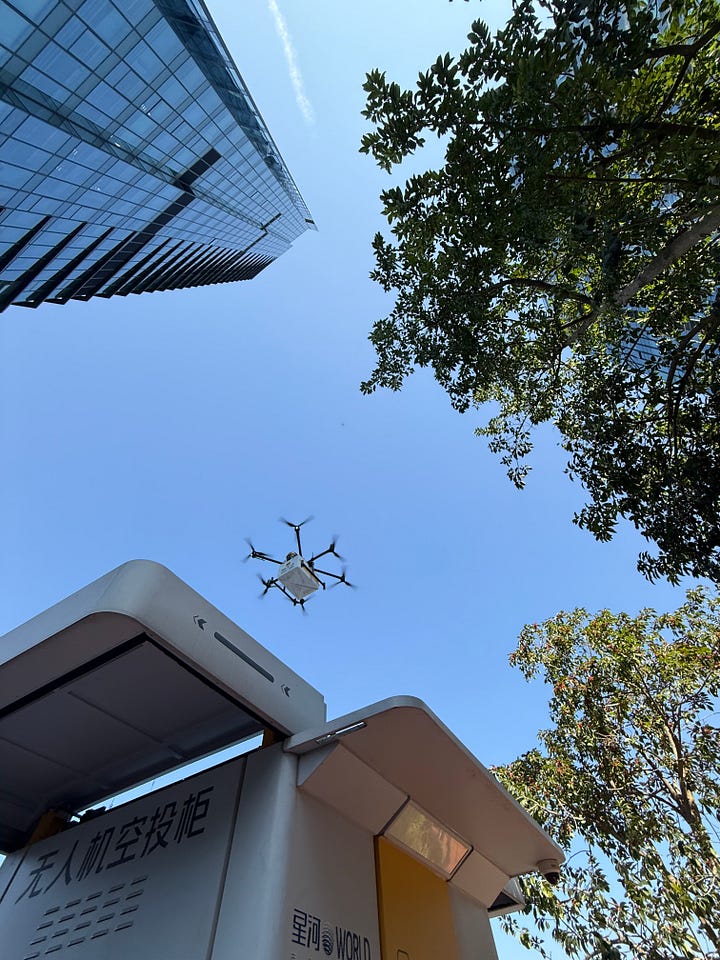
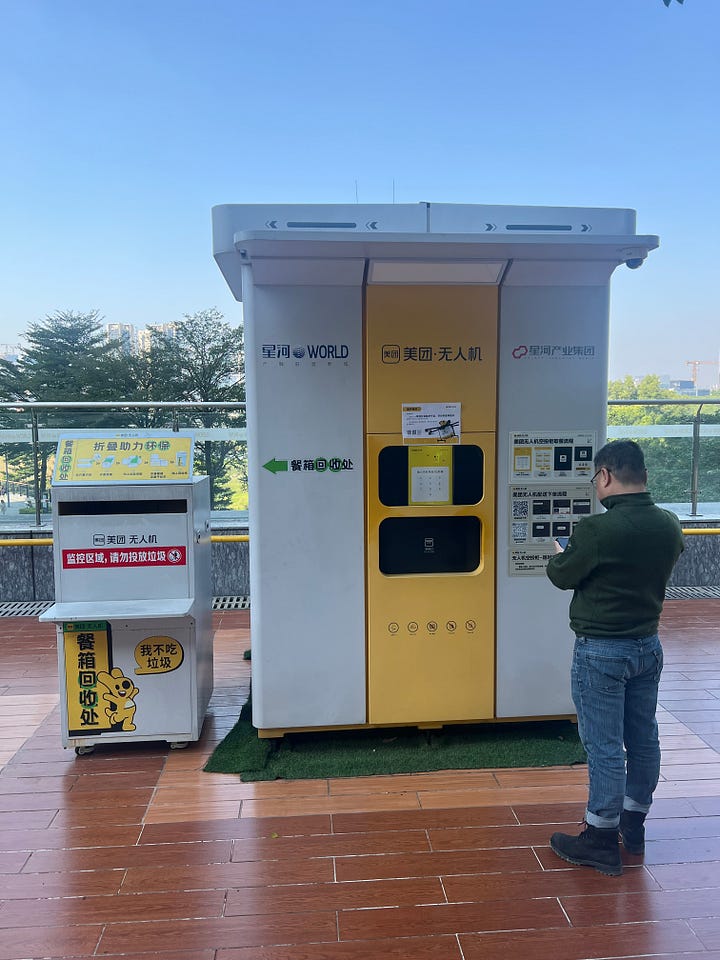
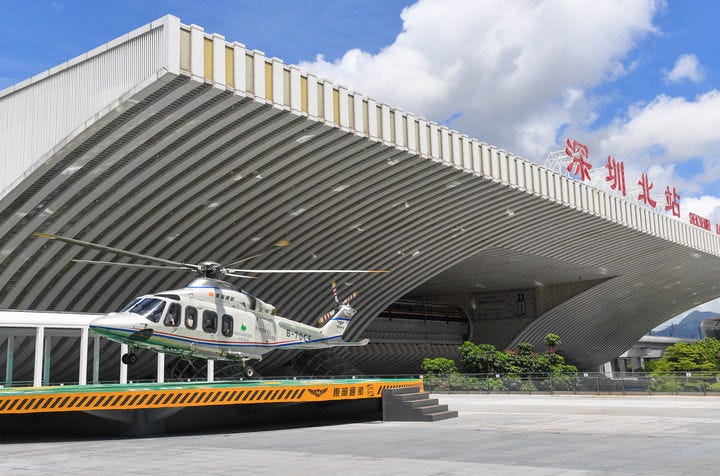
Government-Enterprise Partnership
Why has China surged ahead in drone delivery? I asked my host. He mentions a slew of technical standards and research from the U.S. But primarily, he tells me its about commercial factors and scale. “Really its being led by industry here. The government didn’t know anything about this initially. But once the delivery companies like Meituan started to explore this, the government starts to follow with legal recommendations, guidelines, etc.” In Shenzhen, because of the presence of delivery companies like Meituan and drone-makers like Dajiang (DJI), there was a natural ecosystem for the development of the industry. And the city does not face as stringent of restrictions on its airspace from the military, compared to cities like Chengdu, which is also trying to promote the low-altitude economy.
Security Obstacles
Bureaucratic Obstacles
There are a number of different government entities that have varying degrees of authority over aspects of the low-altitude economy. This includes first and foremost the military. But also local transportation bureaus, the public safety bureau, and city planning agencies are all required for various aspects of the low-altitude economy. The city is working on planning air ways or 航线, which requires coordination with higher-level authorities particularly the military, and transport bureau. Then, there has to be market demand and a density of delivery spots to make drone delivery possible.
Next steps for China’s Low Altitude Economy
Drone delivery in Shenzhen is just one of the scenarios that might comprise an expanding low altitude economy in Chinese cities. With Chinese car companies piloting flying cars of various kinds, the future of the low altitude economy in China may just be getting started. If it scales up, this will bring a host of critical planning and logistical questions that could fundamentally transform cities and the way they operate—how do you restrict air rights or trade off between building rights and the need for delivery? How would mid-air transport corridors change real estate markets? For example, upper floors of buildings would become more accessible, potentially leading to more commercial or recreational facilities in upper levels of structures. The demographics of China’s shrinking population and housing downturn could mean demand for new construction and density wanes over the next few decades, making some of the planning for the low altitude economy somewhat redundant. But given the degree of interest, the companies developing flying car protoypes and drones, and central investment into the low altitude economy, we likely are just seeing the beginning of what could be a major Chinese urban innovation.


